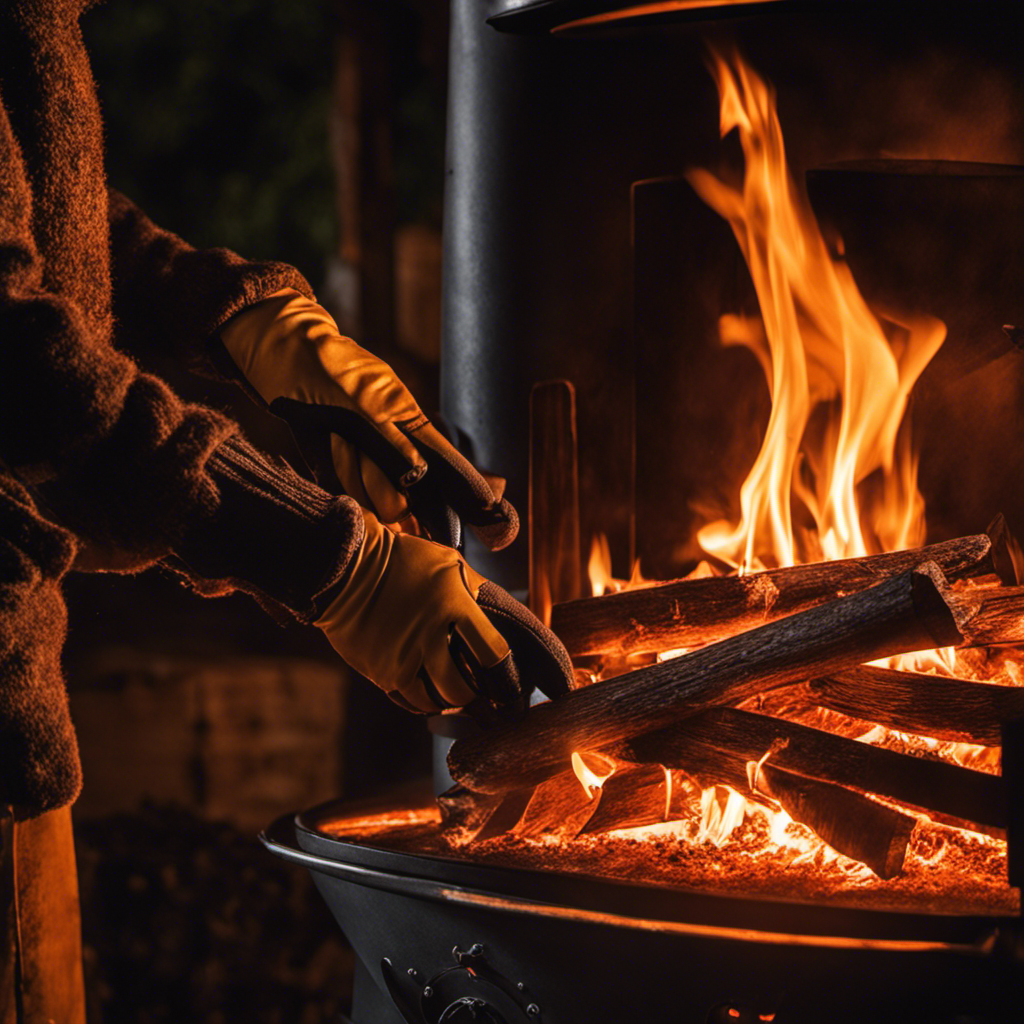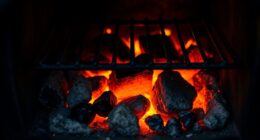After spending a lot of time using wood-burning stoves, I have learned that the secret to getting a cozy and efficient fire lies in having good ventilation.
In this guide, I’ll walk you through the ins and outs of venting your wood stove, from selecting the ideal location to troubleshooting common issues.
With my expert tips and tricks, you’ll be able to enjoy the warmth and ambiance of your wood stove all winter long.
So let’s dive in and master the art of wood stove venting!
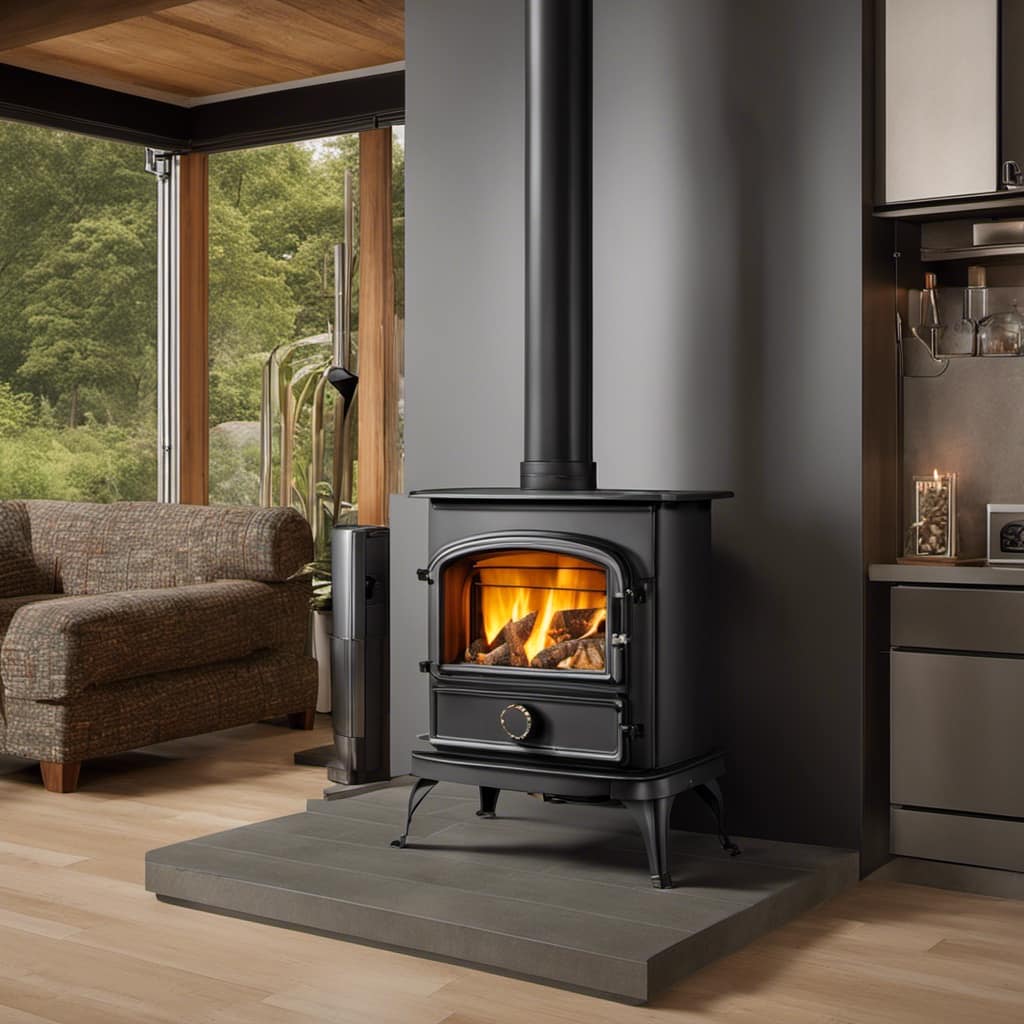
Key Takeaways
- Selecting the right location for your wood stove vent is important for safety and efficiency.
- Understanding the different types of wood stove venting systems can help you choose the best option for your needs.
- Proper installation of wood stove venting components is crucial to ensure safe and efficient operation.
- Regular maintenance and cleaning of your wood stove vent is necessary to prevent issues and maintain optimal performance.
Selecting the Right Location for Your Wood Stove Vent
I’ve found the perfect location for my wood stove vent.
When it comes to choosing the right vent location for your wood stove, there are a few important factors to consider. First and foremost, you need to ensure that the vent is safely and efficiently removing the smoke and gases produced by the stove. This means selecting a location that allows for proper ventilation and minimal obstruction.
Additionally, it’s important to consider the overall layout and design of your home. You want to choose a location that not only meets the safety requirements but also fits seamlessly into the aesthetics of your space.
When it comes to venting system options, there are two main types to consider: vertical venting and horizontal venting. Vertical venting involves running the vent pipe straight up through the roof, while horizontal venting involves running the vent pipe through an exterior wall. Each option has its own advantages and disadvantages, so it’s important to carefully evaluate your specific needs and consult with a professional before making a decision.
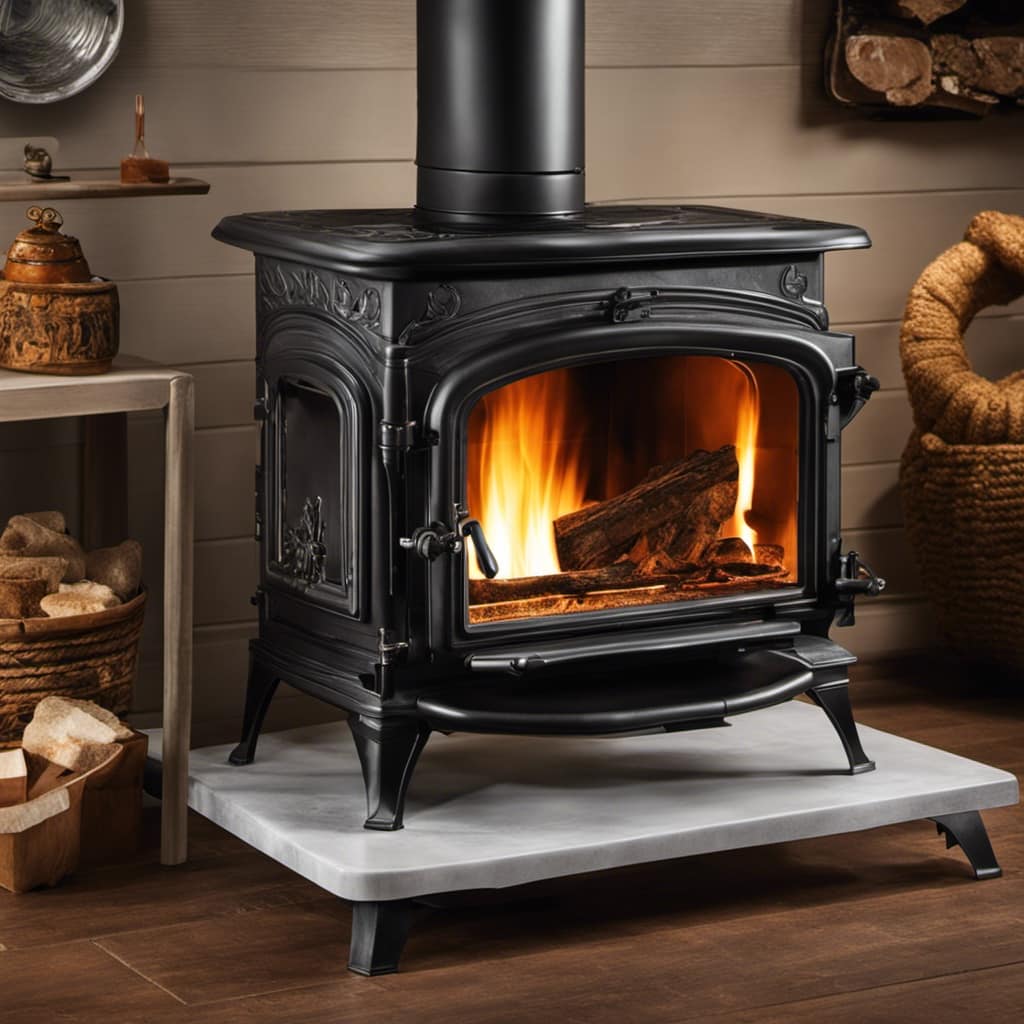
Understanding the Different Types of Wood Stove Venting Systems
When it comes to properly venting my wood stove, it’s important for me to understand the different types of venting systems available. There are several venting options to consider, each with their own regulations and benefits:
Direct Vent: This system uses a sealed double-walled pipe to draw in fresh air for combustion and expel the exhaust gases outside. It’s highly efficient and requires no existing chimney.
Natural Draft: This system relies on the natural buoyancy of hot air to create a draft and expel the exhaust gases through a vertical chimney. It’s simple and cost-effective but requires a properly functioning chimney.
Pellet Vent: Specifically designed for pellet stoves, this system uses a smaller diameter vent pipe to remove exhaust gases. It requires regular cleaning and maintenance.
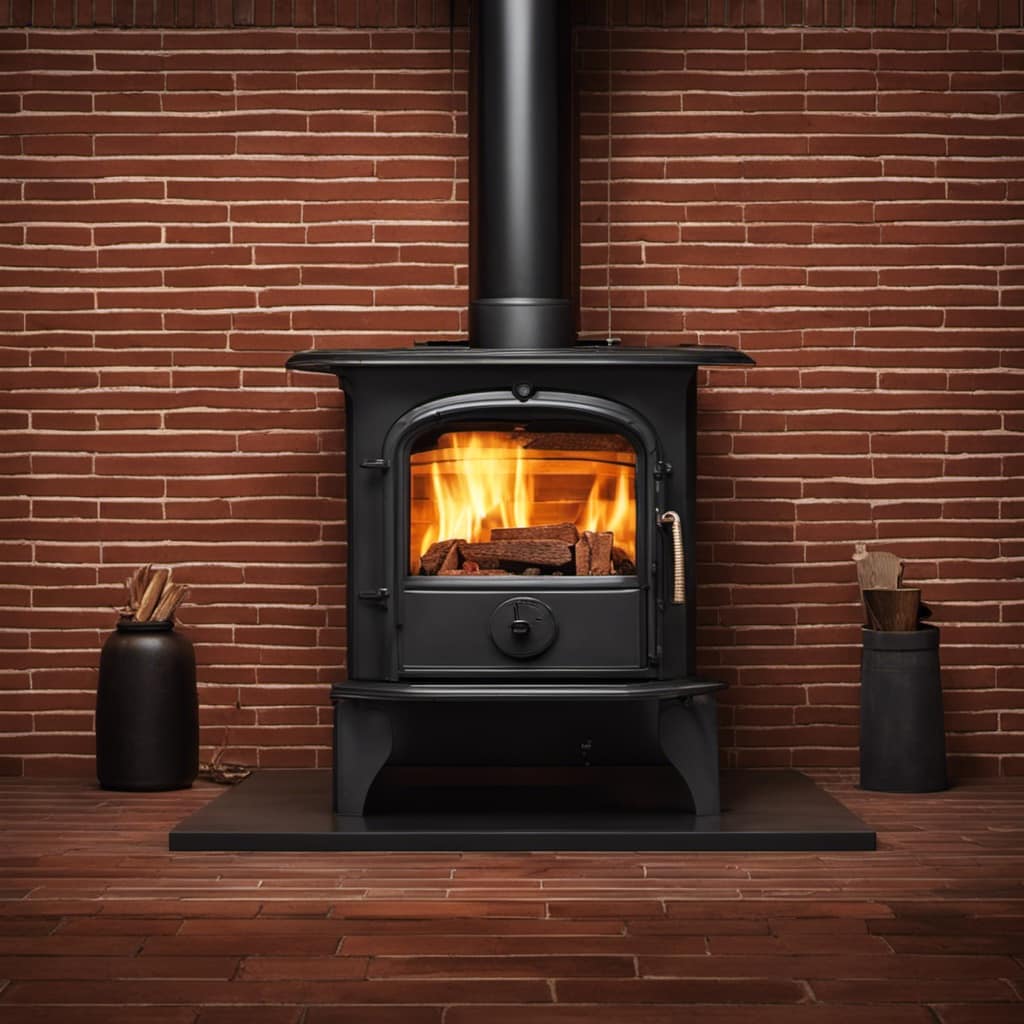
Power Vent: This system uses a fan to force exhaust gases out of the house. It’s ideal for situations where a traditional chimney is unavailable or not suitable.
Understanding these venting options and following the relevant venting regulations is crucial for ensuring the safe and efficient operation of my wood stove.
Proper Installation of Wood Stove Venting Components
Properly installing the venting components is key to ensuring the safe and efficient operation of my heating system. When it comes to wood stove venting, there are important safety precautions to keep in mind.
Firstly, it’s crucial to follow the manufacturer’s instructions and local building codes to ensure proper installation. This includes using the correct size and type of venting components, such as stovepipe and chimney liners.
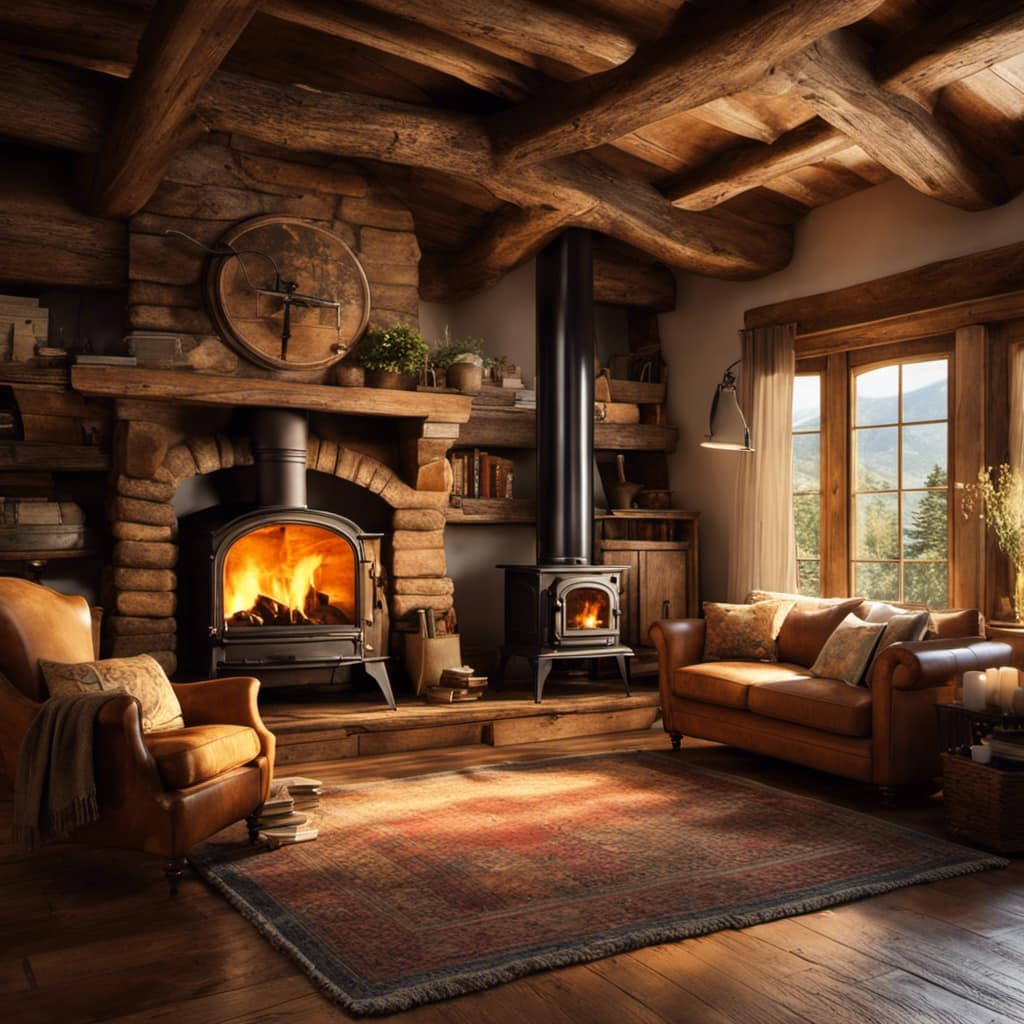
Additionally, it’s important to maintain proper clearances to combustible materials and provide adequate ventilation. Energy efficiency is another important consideration. By sealing any gaps or leaks in the venting system, I can prevent heat loss and ensure that my wood stove operates at its maximum efficiency.
Transitioning into the next section about maintaining and cleaning the wood stove vent, regular inspections and cleanings are essential to keep the system functioning properly and prevent potential fire hazards.
Maintaining and Cleaning Your Wood Stove Vent
Regular inspections and cleanings ensure that my heating system remains safe and efficient. Taking care of my wood stove vent maintenance is crucial for its proper functioning. Here are some cleaning techniques that I use to keep my wood stove vent in top condition:
Clearing out debris: Regularly remove any debris such as leaves, twigs, or bird nests that may have accumulated in the vent.
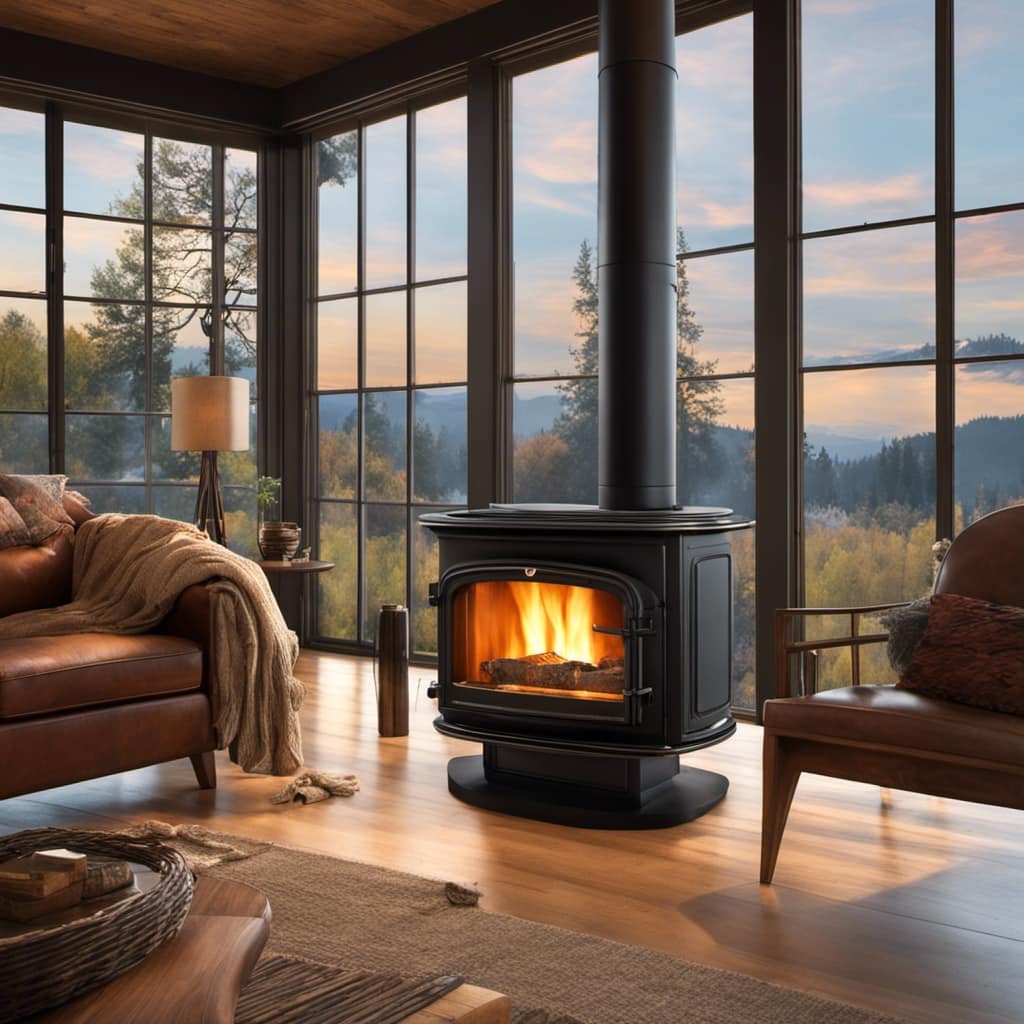
Brushing the flue: Use a chimney brush to remove soot and creosote buildup from the flue, ensuring proper airflow.
Inspecting for damage: Check for any cracks, loose joints, or signs of wear and tear that may require repairs.
Cleaning the exterior: Use a soft brush or cloth to clean the exterior of the vent, removing any dirt or grime.
By following these maintenance and cleaning techniques, I can ensure that my wood stove vent remains in optimal condition.
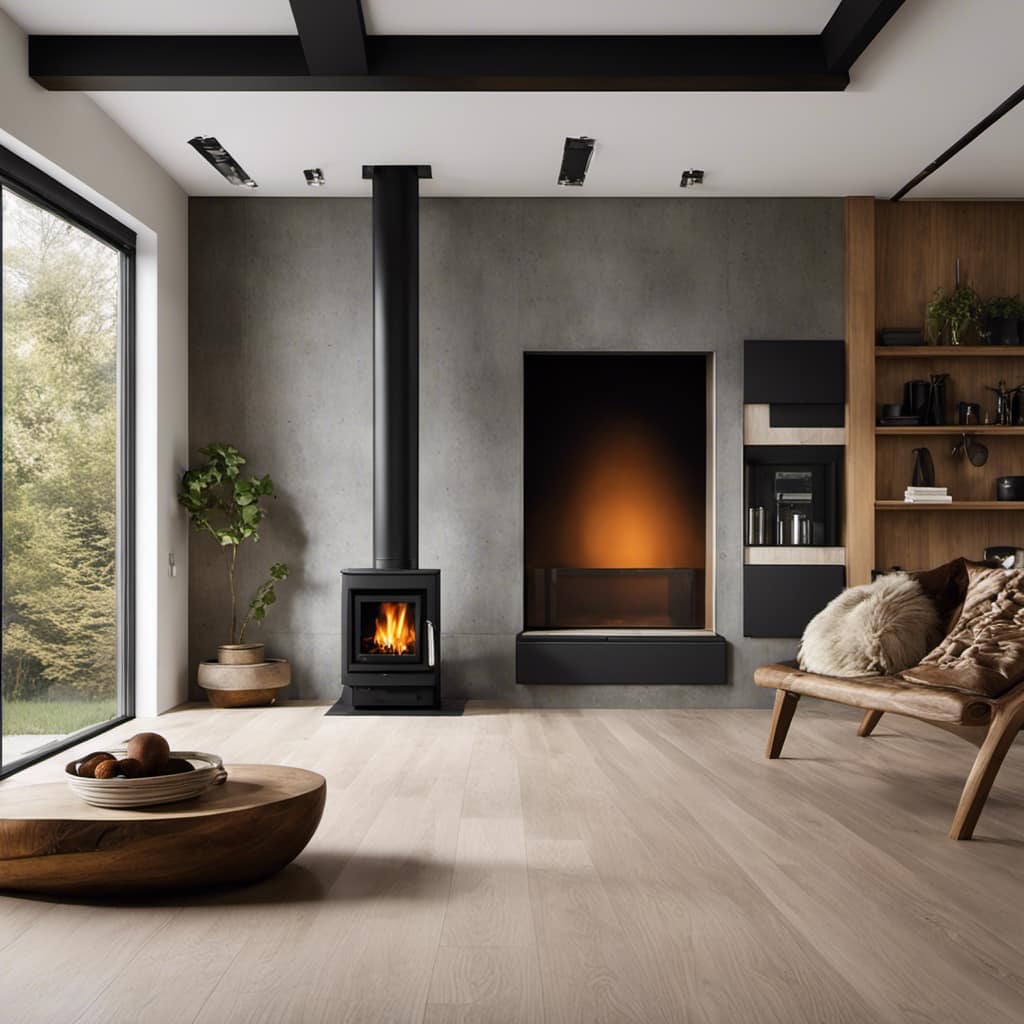
Now, let’s move on to troubleshooting common wood stove venting issues.
Troubleshooting Common Wood Stove Venting Issues
As an owner of a wood-burning heating system, I’ve encountered various issues with the venting of my stove. Troubleshooting draft issues and creosote buildup are common problems that can affect the performance and safety of a wood stove vent.
When it comes to draft issues, the first step is to check for any obstructions in the vent pipe, such as bird nests or debris. Additionally, make sure the damper is fully open and the flue is clear. If draft problems persist, it may be necessary to consult a professional to assess the venting system and make any necessary adjustments.
As for creosote buildup, regular cleaning and maintenance are crucial. Using the correct fuel, ensuring proper air circulation, and regularly inspecting and cleaning the vent pipe can help prevent creosote buildup and reduce the risk of chimney fires.
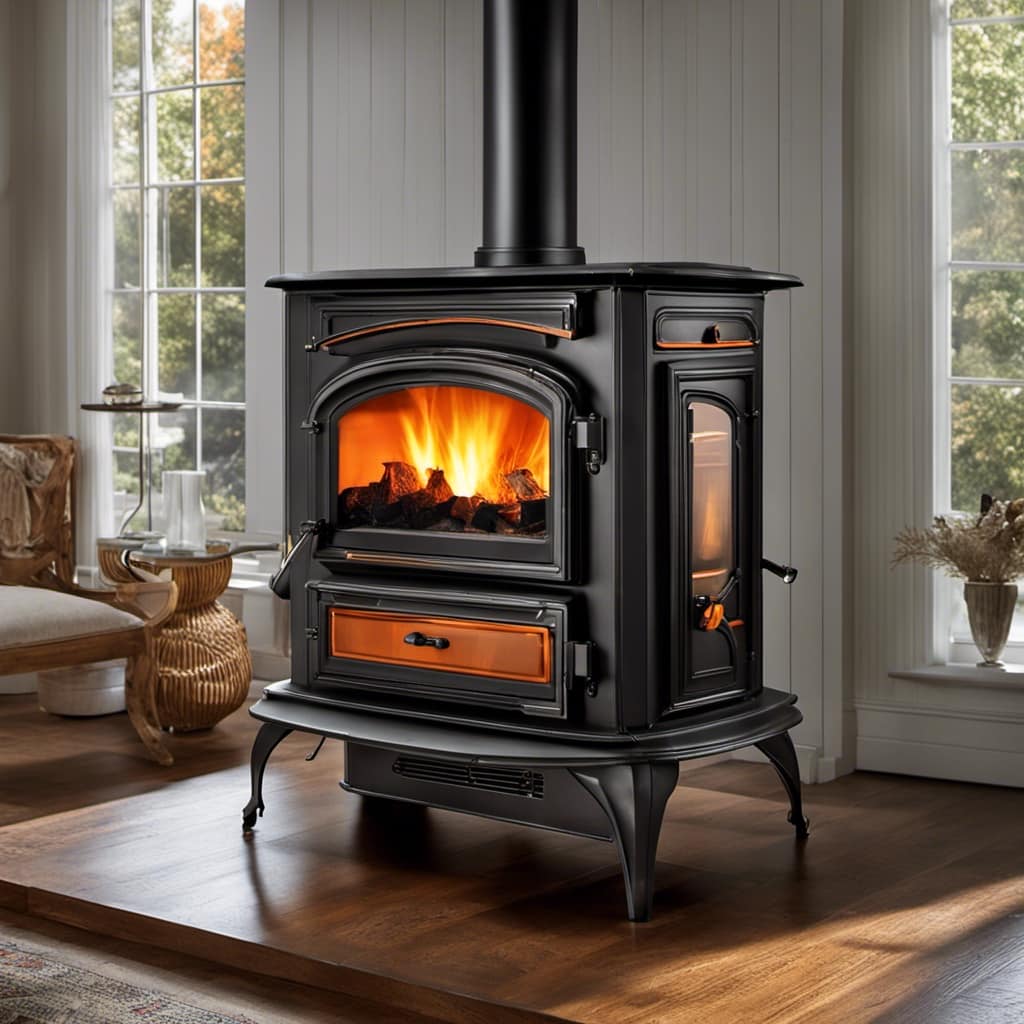
Frequently Asked Questions
How Much Does It Cost to Install a Wood Stove Venting System?
Installing a wood stove venting system can vary in cost depending on factors such as the type of venting needed. Costs can range from a few hundred to several thousand dollars.
Can I Use the Same Venting System for Multiple Wood Stoves?
Using the same venting system for multiple wood stoves? Absolutely! It’s a cost-effective and efficient solution. Just make sure to consult a professional to ensure proper installation and follow safety guidelines.
Is It Necessary to Have a Professional Install the Wood Stove Venting Components?
It is necessary to have a professional install wood stove venting components. DIY wood stove vent installation can lead to common mistakes. It’s important to ensure proper installation for safety and efficiency.
How Often Should I Clean My Wood Stove Vent?
I inspect my wood stove vent annually to ensure it is clean and free of blockages. Common causes of vent blockage include creosote buildup and debris. Regular inspections help maintain the efficiency and safety of the wood stove.
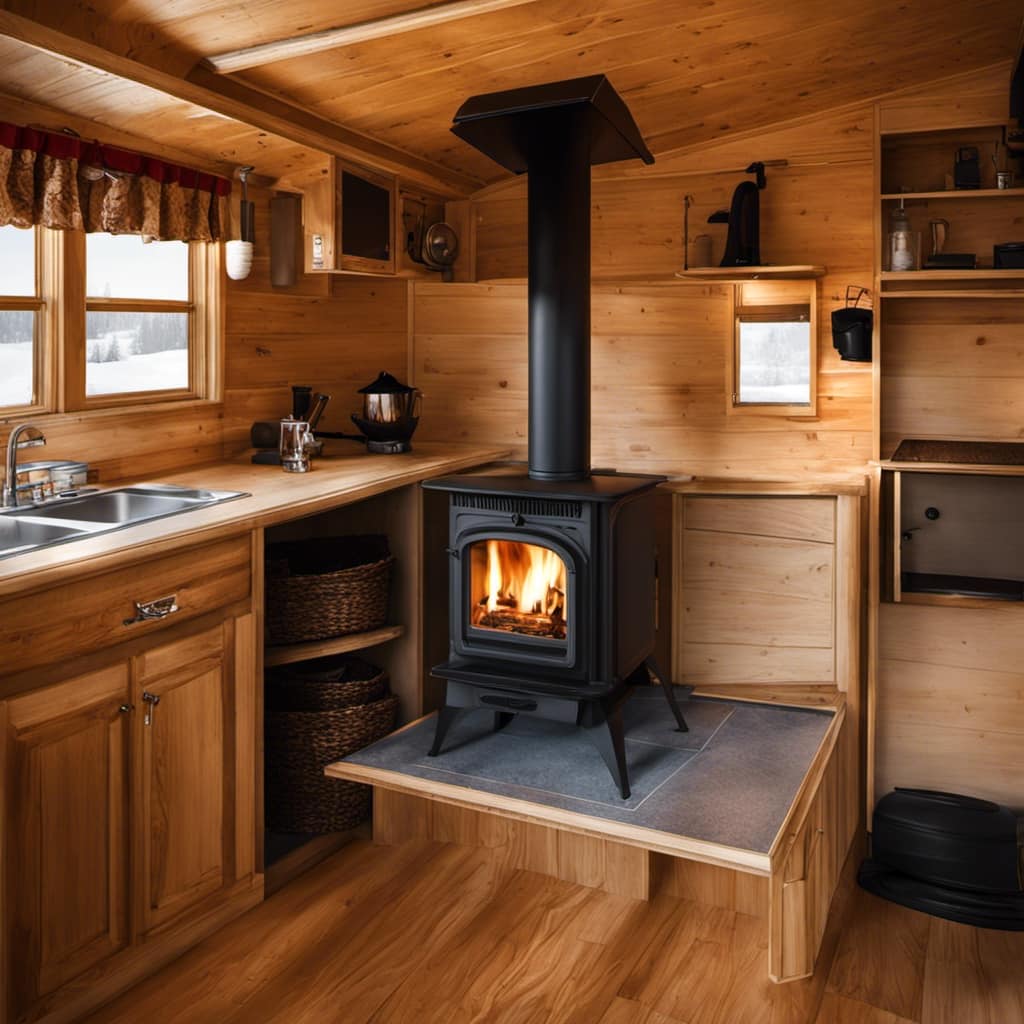
What Are the Signs of a Malfunctioning Wood Stove Vent?
When a wood stove vent malfunctions, it’s like a smoke alarm going off in a library. Signs include backdrafting, excess smoke, and strange odors. Troubleshoot common venting problems to ensure safety and efficiency.
Are the Venting Methods for a Wood Stove the Same Regardless of the Type?
When it comes to vent a wood stove, the methods can vary depending on the type of stove. While some wood stoves require a vertical chimney for venting, others may be vented horizontally. It is essential to follow the manufacturer’s guidelines to ensure proper venting and safety.
Conclusion
In conclusion, properly venting your wood stove is crucial for its safe and efficient operation.
By selecting the right location, understanding the different venting systems, and ensuring proper installation and maintenance, you can enjoy the warmth and comfort of your wood stove without any issues.
While some may worry about the potential cost and effort involved in venting, it’s important to remember that investing in a well-ventilated wood stove is a long-term investment in your home’s safety and energy efficiency.
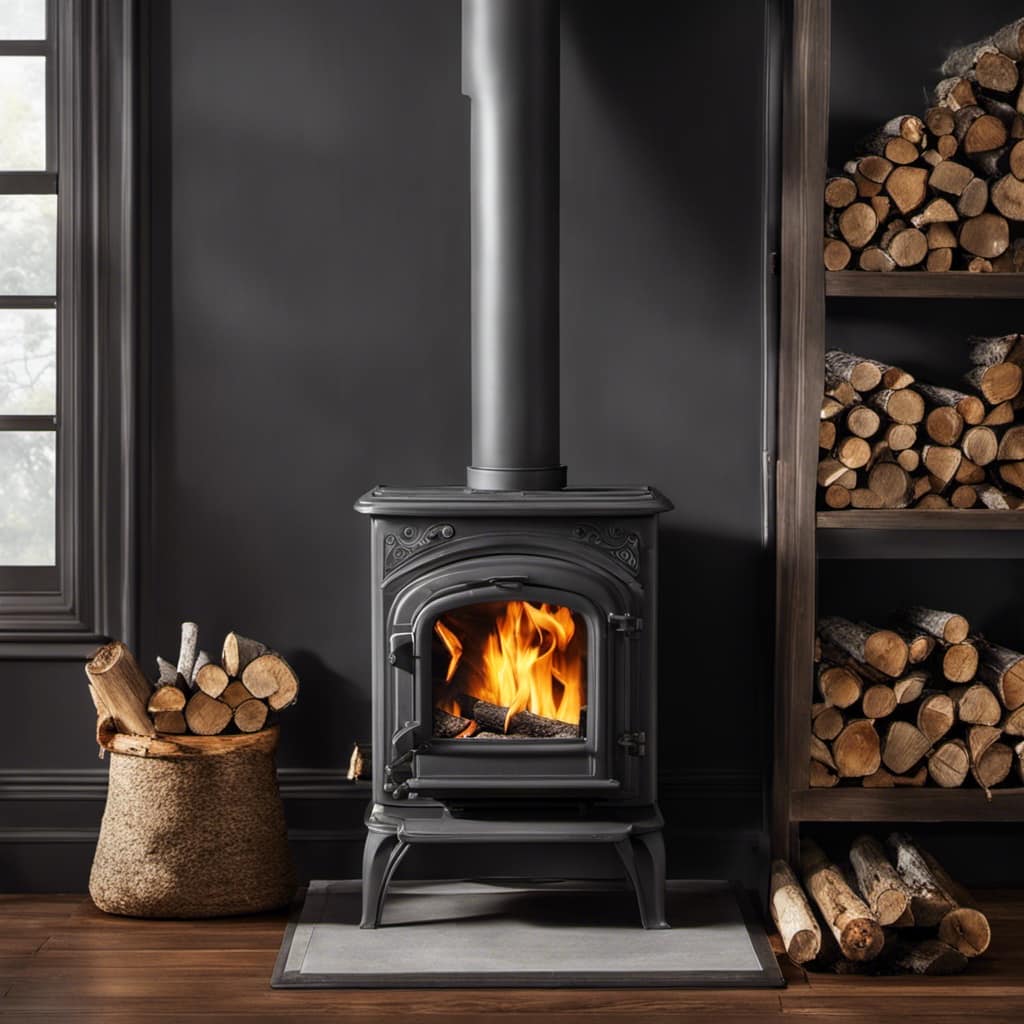
Growing up surrounded by the vast beauty of nature, Sierra was always drawn to the call of the wild. While others sought the comfort of the familiar, she ventured out, embracing the unpredictable and finding stories in the heartbeat of nature.
At the epicenter of every remarkable venture lies a dynamic team—a fusion of diverse talents, visions, and passions. The essence of Best Small Wood Stoves is crafted and refined by such a trio: Sierra, Logan, and Terra. Their collective expertise has transformed the platform into a leading authority on small wood stoves, radiating warmth and knowledge in equal measure.




